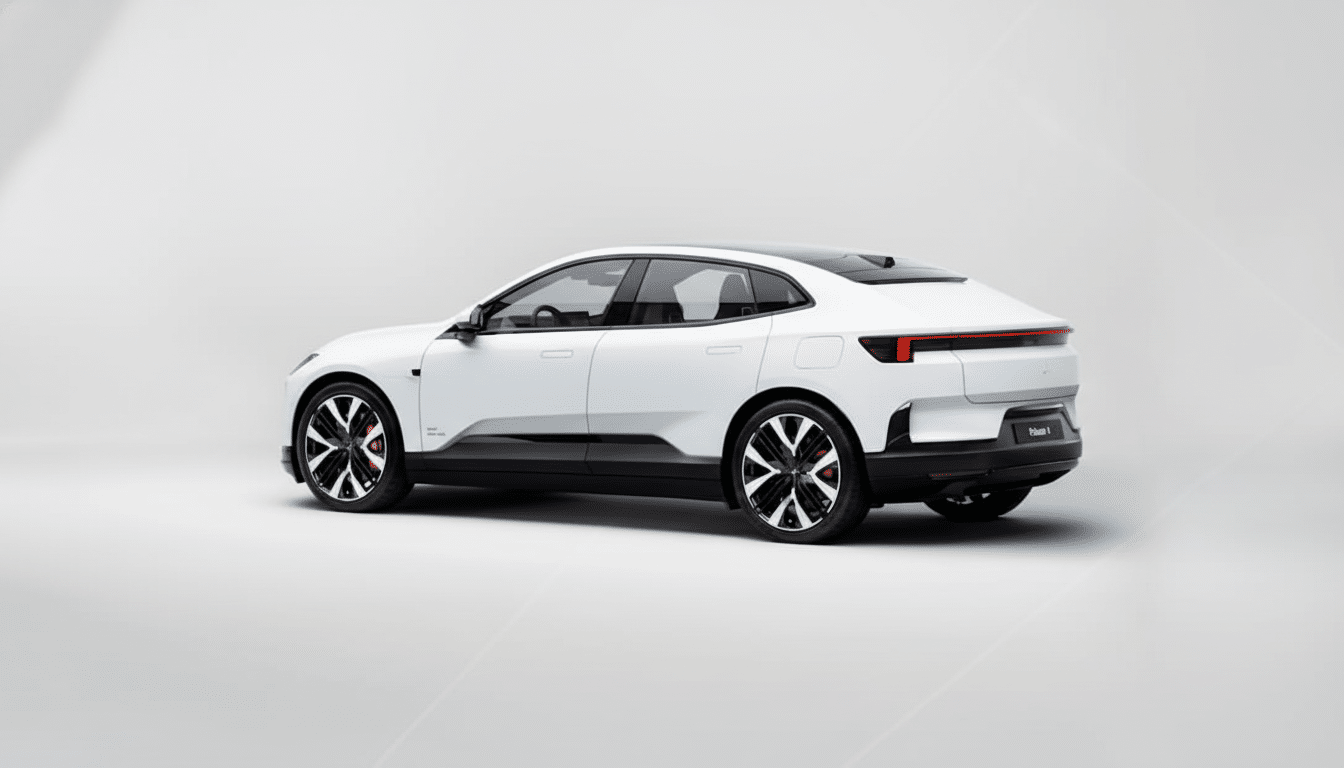Google is also launching Live Lane Guidance for the Polestar 4, which employs the vehicle’s cameras and on-vehicle AI to read the lane markings of the road in real time and prompt drivers to move lanes sooner rather than later while approaching exits.
It’s an updated navigation system that is there to cut down on last-second swerves and missed ramps, and it comes first in a model that already natively runs Google’s infotainment stack.

Unlike the static lane guidance that many drivers are familiar with, this integrates Google Maps directions with what the vehicle sees. When you’re approaching a complicated interchange, the system can tell you to start moving right or left soon enough to actually merge cleanly, instead of waiting for an instruction that arrives a few hundred feet before the exit.
What Live Lane Guidance Does in the Polestar 4
Live Lane Guidance, meanwhile, puts the Polestar 4’s forward-facing camera to work analyzing lane markings and cross-referencing them against your route to give timely context-aware prompts on the center display and via voice. Think of it as a would-be coach who takes into account how many lanes you need to cross to reach the correct exit and asks you to start crossing earlier.
The payoff comes on multi-lane highways and braided interchanges, where committing early to two or three lanes prevents frantic weaving. It feels how it should, because it’s built into Android Automotive and the navigation shows up right in the native Google Maps app with the same look, feel, and voice pack that owners already use.
Why It Matters for EV Drivers Using Polestar 4
Blowing an interstate exit in heavy traffic can pile on miles, minutes and stress — none of which drivers want on a tightly timed course. Polestar 4 customers will already enjoy route navigation planned based on charging availability, altitude and velocity; Live Lane Guidance adds a useful overlay that prevents unnecessary diversion or hard-right maneuvers that shatter efficiency.
Safety is the larger story. The Insurance Institute for Highway Safety has found that technologies that aid drivers in keeping their lane — such as lane departure warning — are linked to significant reductions in sideswipe and head-on injury crashes. Live Lane Guidance isn’t active safety technology, but pre-empting with earlier, more modest lane changes also addresses the same potentially dangerous edge cases: late merges and sudden cuts across multiple lanes.
How It Is Different From Driver Assist Systems
It’s not autonomous lane changing. Drivers steer, signal and merge as before; the system just times the suggestion. That places it in a different league than semi-automated systems like GM’s Super Cruise or Tesla’s Full Self-Driving (Supervised), which can execute lane changes on some roadways while under driver supervision.
Google’s method for now leaves the responsibility firmly on the human, which could assuage regulators but still provide a real usability enhancement. If anything, it is a demonstration of how mapping and perception can become more sophisticated without slipping into the realm of automated control.

Availability and Roadmap for Polestar 4 Rollout
Google says Live Lane Guidance will initially come to Polestar 4 cars in the US and Sweden, with a broader rollout coming that targets different kinds of roads as well as partner car companies. Polestar’s deep partnership with Google also makes a natural launchpad. The 4’s infotainment stack runs Android Automotive natively (though not exclusively; Polestar 4 owners who want Apple CarPlay can get it).
Polestar describes the 4 as a four-door electric SUV, with a base price of $56,400 — which plants it firmly in the segment that can be won over by tech-forward features. The feature should make its way via an over-the-air update after the company is done validating it regionally.
Competitive and Ecosystem Context for In-Car Navigation
Many navigation apps already show you which lane to be in. The key differentiator here is live perception: using camera vision to plan these earlier, staged lane moves as opposed to relying solely on map data. Apple Maps supports lane guidance but not camera-informed lane-change timing, and crowd-powered apps make warnings surface without synthesizing vehicle vision.
The launch demonstrates how rapidly Android Automotive is becoming a software platform for vehicles from Polestar, Volvo and other brands. It’s also a judicious application of AI in the cockpit: practical, scoped and driver-in-the-loop rather than a grandiose autonomy claim.
Early Takeaways from Google’s Live Lane Guidance Launch
If successful, Live Lane Guidance could help reduce the specific kind of driving behavior that freaks out highway travel: last-second lane hopping.
The true test, of course, will be how well the devices perform in messy reality — sun glare, glimpsed only out of the corner of an eye, with a rainstorm bearing down or snow pelting. Google hasn’t explained the full path that its data takes, but it’s common to handle these types of features in-vehicle to reduce latency.
Like all driver aids, vigilance is non-negotiable. But smarter timing on lane changes could make the daily grind more soothing for Polestar 4 drivers, and long-distance trips marginally swifter. It’s only a small, focused step, but it suggests the possibility that in the future maps and machine vision could work together to generate guidance that feels much less like instructions and more like intuition.

